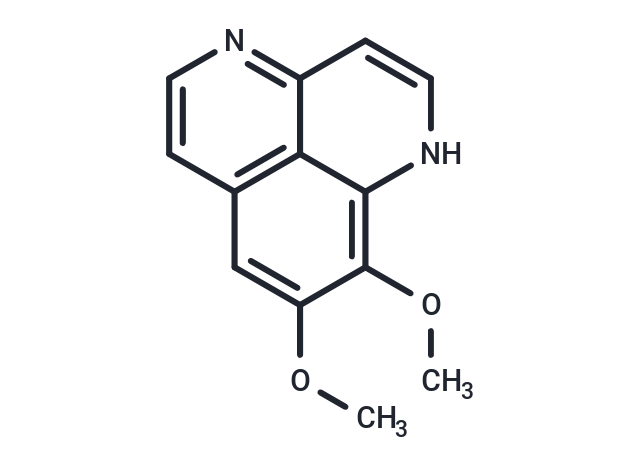Shopping Cart
Remove All Your shopping cart is currently empty
Your shopping cart is currently empty
Aaptamine functions as a proteasome inhibitor, it activates p21 promoter in a p53-independent manner.

| Pack Size | Price | USA Warehouse | Global Warehouse | Quantity |
|---|---|---|---|---|
| 10 mg | $550 | Inquiry | Inquiry |
| Description | Aaptamine functions as a proteasome inhibitor, it activates p21 promoter in a p53-independent manner. |
| In vitro | All Aaptamines were found to be equally effective in both cell lines, excluding cross-resistance between Aaptamines and cisplatin in vitro. At the inhibitory concentration (IC50), Aaptamine exerted an antiproliferative effect, whereas demethyloxyAaptamine and isoAaptamine were strong inducers of apoptosis. We analyzed the changes in the proteome of NT2-R cells treated with these compounds. 16-22 proteins were found to be significantly altered, of which several were validated by Western blotting and two-dimensional Western blotting analysis. Changes in the proteome pattern frequently resulted from post-transcriptional protein modifications, i.e. phosphorylation or hypusination in the case of eIF5A. Although the lists of altered proteins were heterogeneous and compound-specific, gene ontology analyses identified rather similar profiles regarding the affected molecular functions. Ingenuity pathway analysis by IPA put the following factors in a central position of the hypothetical networks: myc and p53 for Aaptamine; tumor necrosis factor (TNF) for demethyloxyAaptamine; and all three, myc, p53, and TNF for isoAaptamine[1] |
| Molecular Weight | 228.25 |
| Formula | C13H12N2O2 |
| Cas No. | 85547-22-4 |
| Relative Density. | 1.246g/cm3 |
| Storage | Powder: -20°C for 3 years | In solvent: -80°C for 1 year | Shipping with blue ice/Shipping at ambient temperature. |
| Size | Quantity | Unit Price | Amount | Operation |
|---|

Copyright © 2015-2025 TargetMol Chemicals Inc. All Rights Reserved.